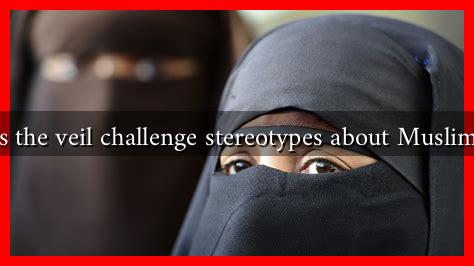-
Table of Contents
- How Does the Veil Challenge Stereotypes About Muslim Women?
- The Veil: A Symbol of Identity and Empowerment
- Debunking Myths: The Reality of Muslim Women’s Lives
- Case Studies: Voices of Muslim Women
- Statistics and Research: The Changing Landscape
- Conclusion: Embracing Diversity and Challenging Stereotypes
How Does the Veil Challenge Stereotypes About Muslim Women?
The veil, often a subject of heated debate and misunderstanding, serves as a powerful symbol of identity for many Muslim women. While it is frequently associated with oppression and subjugation, the reality is far more nuanced. This article explores how the veil challenges stereotypes about Muslim women, highlighting their agency, diversity, and the cultural significance of this practice.
The Veil: A Symbol of Identity and Empowerment
For many Muslim women, wearing the veil is not merely a religious obligation but a personal choice that reflects their identity. The act of veiling can be empowering, allowing women to assert their individuality in a world that often seeks to define them by their appearance. Here are some ways the veil serves as a symbol of empowerment:
- Personal Agency: Many women choose to wear the veil as an expression of their faith and personal beliefs, challenging the stereotype that they are forced into it.
- Cultural Identity: The veil can signify cultural heritage, allowing women to connect with their roots and express pride in their background.
- Political Statement: In some contexts, wearing the veil can be a form of resistance against Western imperialism and cultural hegemony.
Debunking Myths: The Reality of Muslim Women’s Lives
Common stereotypes portray Muslim women as oppressed, voiceless, and lacking autonomy. However, these generalizations fail to capture the diversity and complexity of their experiences. Research and case studies reveal a different narrative:
- Education and Employment: According to a report by the Pew Research Center, Muslim women are increasingly pursuing higher education and entering the workforce. In countries like Turkey and Indonesia, women are leading in various professional fields.
- Activism and Leadership: Many Muslim women are at the forefront of social justice movements. For instance, Malala Yousafzai, a Pakistani activist for girls’ education, has become a global icon, challenging stereotypes about Muslim women.
- Diverse Perspectives: The experiences of Muslim women vary widely across different cultures and countries. For example, in Western nations, many women wear the veil as a choice, while in others, it may be mandated by law or tradition.
Case Studies: Voices of Muslim Women
To further illustrate how the veil challenges stereotypes, consider the following case studies:
- Linda Sarsour: A prominent activist and co-chair of the Women’s March, Sarsour uses her platform to advocate for social justice while proudly wearing her hijab. She challenges the notion that Muslim women are passive and voiceless.
- Yasmin Seweid: A New York college student who was attacked for wearing a hijab, Seweid turned her experience into a platform for dialogue about Islamophobia and the importance of understanding diverse identities.
Statistics and Research: The Changing Landscape
Statistics reveal a shifting landscape regarding perceptions of Muslim women and the veil:
- A 2020 study by the Institute for Social Policy and Understanding found that 67% of American Muslims believe that wearing a hijab is a personal choice.
- Research indicates that Muslim women who wear the veil often report higher levels of self-esteem and personal empowerment compared to those who do not.
Conclusion: Embracing Diversity and Challenging Stereotypes
The veil is a multifaceted symbol that challenges stereotypes about Muslim women. It represents personal agency, cultural identity, and empowerment rather than oppression. By understanding the diverse experiences of Muslim women and recognizing their voices, society can move beyond simplistic narratives and appreciate the richness of their identities. As we continue to engage in conversations about the veil, it is crucial to listen to the women who wear it and respect their choices, fostering a more inclusive and understanding world.
For further reading on the topic, you can explore resources from the Pew Research Center and the Institute for Social Policy and Understanding.

